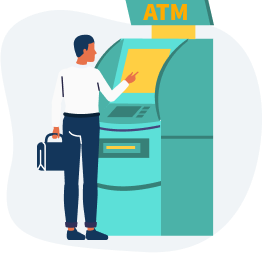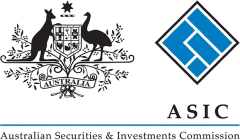Currency in Poland
A Travel Money Guide to Poland
Picturesque Poland offers stunning medieval architecture in Krakow, stunning old towns in Warsaw and Wroclaw, loads of museums and art galleries. Poland is teaming with outdoor activities as well including the calming Tatra mountains, Bialowieza Forest Reserve, which is a UNESCO World Heritage Site and the Ojcow National Park. But Poland isn’t a budget destination and to get the most out of your trip, it’s a good idea to learn everything you can about the local currency and payment options before you go.
The currency that is used in Poland
In Sweden, locals use the Polish Zloty, which has the international code PLN and the symbol zł.
There are 6 different Polish banknotes: zł10, zł20, zł50, zł100, zł200 and zł500. Anymore than one Zloty is a Zlote.
The Zloty is subdivided into 100 grosz. Grosz coins are 1gr, 2gr, 5gr, 10gr, 20gr and 50gr. Zloty coins are zł1, zł2 and zł5.
Interestingly Poland is part of the Eurozone however it has not changed it currency to the Euro, similar to Denmark and Sweden, which have kept their existing currency.
Euros might be accepted in high volume tourist shops or hotels however to avoid crippling exchange rates, its best to take Polish Zloty with you on your travels.


Using Your Bank Card
Most Polish businesses are well set up to receive card payments. But before you use your bank card willy-nilly, it’s worth reading up on which cards are the best money cards to take travelling and what fees and charges you might incur.
Debit Cards
You’ll probably want a debit card if you plan to withdraw money from an ATM. While you may also be able to pay with a debit card in some businesses in the major destinations, you might discover some hefty fees on your account summary.
Depending on your bank, you could be hit with fees for foreign ATM withdrawals or currency conversions. But some banks are better than others; we recommend checking out Wise, ING and Revolut, all of which have travel-friendly debit cards that waive these charges.


Credit Cards
Credit cards can come with some enticing perks, including added security, loyalty programs, and even free travel insurance.
But are they worth it?
Major local businesses, including hotels, restaurants, airline offices, and department stores, accept credit cards. But you might have to pay a surcharge.
Mastercard and Visa are widely accepted. You may also be able to use your American Express card, though local ATMs won’t accept them.
Just be aware of additional charges you may incur for foreign transactions. These could include:
- International transaction fees
- High exchange rate margins
- ATM fees
- Potential ‘cash advance fees’ if you use an ATM
If you still prefer credit cards over any other payment, consider going with a company that offers cards that waive certain travel fees. Bankwest Platinum and 28 Degrees both have travel-friendly cards.
Prepaid Travel Cards
The biggest advantages of prepaid travel cards are that you can lock in a favourable exchange rate. You also get a handy back-up card.
Just remember that while they are convenient, you could end up paying a long list of hidden fees. Many travel cards still impose:
- Currency conversion fees
- Uncompetitive exchange rates
- International ATM withdrawal fees
- Initial load fees
- Reload fees
- Inactivity fees

How to Buy Zloty Before You Go
There’s a certain reassurance that comes with stepping off the plane (or cruise ship) already cashed up with Zloty.
Buying Zloty before you leave Australian shores isn’t just convenient. It can also save you money. But it all depends on where you get your Zloty in Australia. There are three 3 options:
- Buy PLN online and have it delivered or collect it in-store
- Swap Polish Zloty for Australian Dollars from a money changer
- Buy Polish Zloty at your home airport
Try S Money or a similar online currency exchange store to get rates that reflect the comparisons you see on XE or Google.
If you choose online delivery or in-store pickup, check the processing time. Some exchange companies with online options suggest you allow between two and five days to process currency.
Prefer in-store currency exchange? Head to the CBD of your nearest city for the most competitive exchange rates; suburban bureau de change outlets tend to have poorer rates and fees.
Currency exchange counters in Australia’s airports are infamous for their atrocious exchange rates. Avoid them if you can.
How Much Cash Should I Bring to Poland?
Budgeting for your trip gives you a good idea of how much you may need for the length of your stay. This might keep you accountable, help you stretch your savings, or help you avoid having to convert currency back into dollars at the end of your trip.
The average daily travel budget in Poland is about $100. Some of the expenses you might be looking at include:

$85 per night
A double room in a mid-range hotel

$25
Average lunch for 2

$3
A bottle of beer

$7
Average daily transport

$10
Admission for entertainment
How to Change Currency When You Arrive
Places like Kraków, and Warsaw receive great numbers of tourists, so there are facilities to cater to money exchanges. Beyond these major destinations, it’s best to get cash before you venture into remote territory.

ATMs
Citibank, Millennium bank and mBank have lots of ATMs in Poland, to get your local cash abroad. Plus there are ATMs at the Warsaw Chopin airport, making things extra easy.
Depending on your bank, you may have to pay for overseas ATM withdrawals and currency conversions. To reduce the amount you’ll pay in fees, try to withdraw just the right amount of money you’ll need for the duration of your trip.
Don’t forget: Let your bank know you’re travelling! If they detect a foreign transaction but aren’t aware you’re overseas, they could end up freezing your card.
Currency Exchange in Poland
Currency exchanges are called ‘Kantors’ in Poland and there are plenty of them in city centres, larger hotels, trains stations and shopping centres.
Kantors tend to offer marginally better rates than banks and tend to trade the major currencies including US dollars, British Pounds, Australian dollars, Euros and Canadian dollars.


Travellers Cheques
Not worth the bother! Travellers cheques are so outdated, very few banks even accept them any more.
Few places outside the well-trodden tourist path will accept travellers cheques, so your best option is to exchange cheques for cash at a bank.
These days, when pitted up against plastic money and currency exchanges, travellers cheques seem more hassle than they’re worth.


